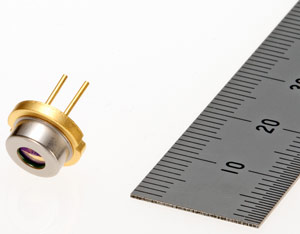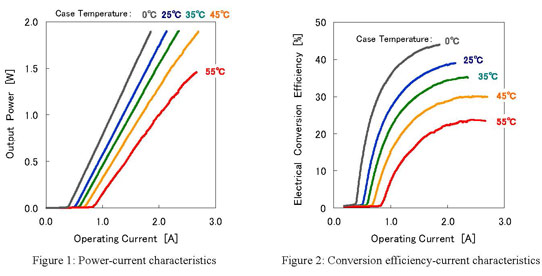At the Laser Display Conference (LDC 2014) at National Chung Hsing University in Taichung, Taiwan (19-20 June), Tokyo-based Mitsubishi Electric Corp is presenting a 638nm-wavelength? red laser diode (LD) with what is claimed to be record output power of 1.8W (under continuous-wave operation) in this package size (9.0mm TO-can) for projector light source applications.

Picture: 638nm-wavelength red laser diode.
Light sources for color projectors are conventionally lamps, but these are being replaced with solid-state light sources offering higher energy efficiency, better color reproduction and longer life. In particular, laser diodes deliver high output power while consuming low power because of their high power-conversion efficiency, says Mitsubishi Electric.
Previously, the output power of red laser diodes with wavelengths shorter than 640nm was insufficient for high-brightness projector applications at high temperatures. As a first step to overcome this limitation, Mitsubishi Electric applied specialized window-mirror structures and epitaxial growth technology to develop a laser diode, packaged in a 5.6mm-diameter transistor-outline can (TO-can), achieving 0.5W power output under continuous-wave (cw) operation. The firm then applied an improved laser diode structure (with optimized layer structure and emitting-region size) in a 9.0mm TO-can package to achieve what is claimed to be industry-leading output power of 1.8W at a 638nm lasing wavelength. Due to lasing at a short wavelength, luminosity as a red light source exceeds 220 lumens, meeting the demands for bright projector systems, says the firm.

Mitsubishi Electric also claims that the new 638nm red laser laser achieves industry-leading electrical conversion efficiency of 38% at 1.8W (at 25°C), helping to reduce power consumption. In addition, dueto using a large TO-can package with a diameter of 9.0mm, good heat dissipation allows a wide operational temperature range, e.g. emitting 1.8W (cw) over 0°C to +45°C and 1.3W (cw) above 55°C.
Mitsubishi Electric plans in future to enhance its new laser diode's high-power, low-consumption characteristics further, targeting commercial launch in the fiscal year ending March 2016, when demand for laser light sources for projector applications is expected to take off.